Dexter cattle are often considered the “perfect small cow,” but are they truly suitable for everyone?
They are versatile, space-efficient, and expensive. Dexters are also good counterparts to Kerry and Jersey cattle.
If you’re still confused about whether to choose or leave Dexter cattle, here is a list of advantages and disadvantages to decide.
Advantages of Dexter Cattle
Small Size
Dexter cattle are small, around 36–46 inches tall, weighing 700-750 pounds. They come in three different colors, including black, red, and dun, with or without horns.
Due to their small size, dexters are easy to manage, transport, and house compared to larger breeds.
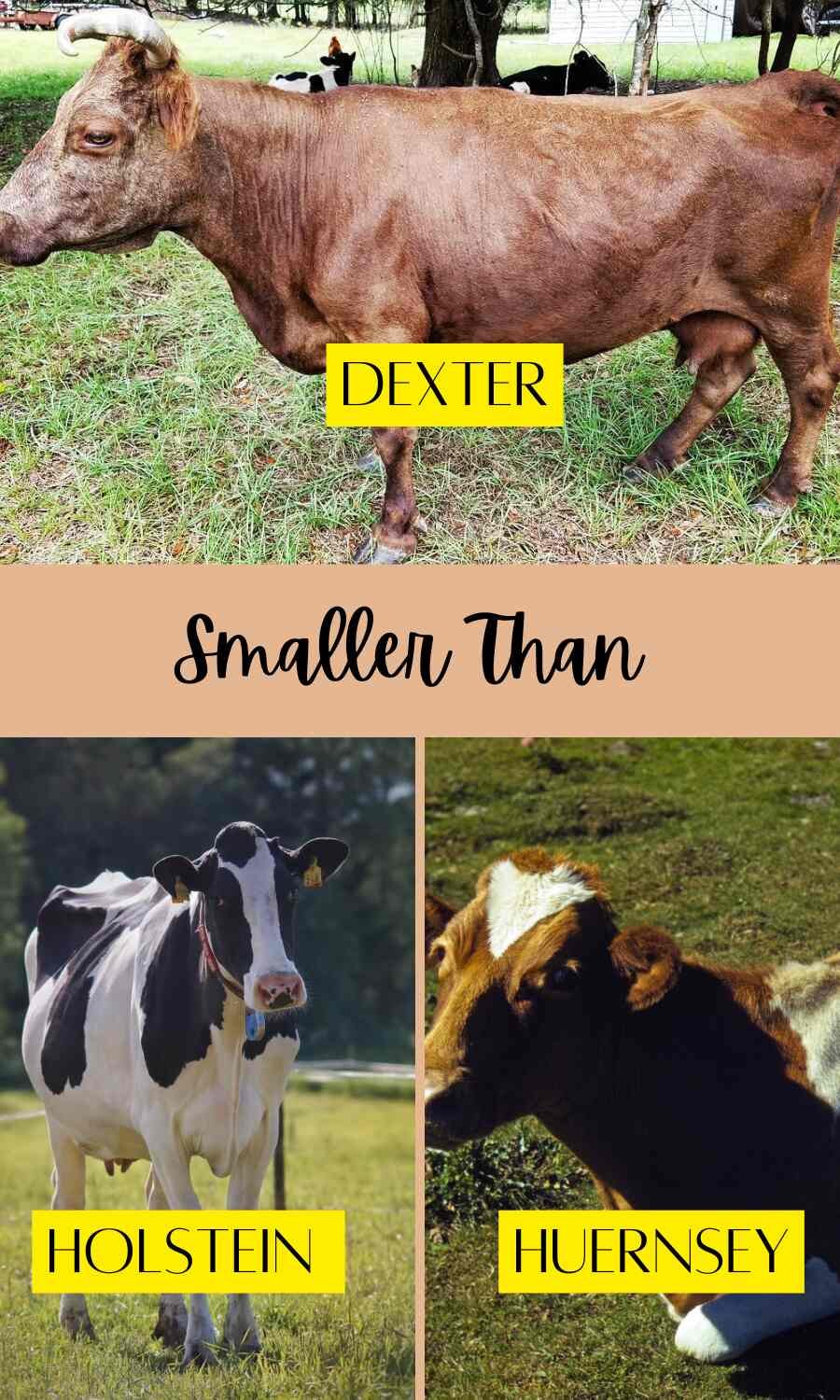
They are ideal for small homesteads and limited pasture space.
10×10 or 11×11 feet stall will be enough for shelter, and a half to one-acre homestead will be a great house for them.
Tri-purpose Animal
Dexters are raised for milk, beef, and draft animals.
Unlike others, they are one of a few tri-purpose animals along with Icelandic sheep. So, one adult dexter can provide enough milk for a small homestead family.
Besides, dexter cows plow the land and pull carts and heavy loads.
So, raising dexters reduces the need to keep separate cattle for milk and meat.
Hardy and Disease-Resistant
Drxters thrive well in both warm and cold environments.
For example, their thick and worm beaver helps the cattle survive the extreme cold and wet climate.
They also have an open backside that allows ventilation under the body so that they can feel cool in the warm seasons.
To our surprise, dexters rarely get sick and recover quickly. They have strong innate and adaptive immunity and can resist several infectious diseases.
Besides, they are also parasite-resistant to horn flies, lice, lungworms, etc.
Dexter cattle can thrive on lower-quality forage, making them suitable for low care and areas with less fertile pastures.
Low Feed Requirements
A single head eats 16 pounds of hay per day, which is lower than 30–35 pounds of intake for common cattle.
Their feeding is based on 2% of their body, which suggests 4 to 5 tons of forage per year.
Dexters consume mainly grass, weeds, vegetation, and trees in the summer and hay in the winter.
They pasture well and make good grazing animals. Small pastures with a mix of grasses and legumes can make them happy.
Rich, Creamy Milk
Dexter cows give sweet, creamy milk with high butterfat content (up to 4–5%), which is ideal for making cheese, butter, and yogurt.
They produce A2 milk that tastes lighter and fresher, I guess.
The milk does not contain A1 beta-casein protein, which makes troubles for consumers to digest.
Dexter cows can average 8–14 liters daily for a first-time calver. But it rises over the next three years. So, their milk is perfect for small families focusing on quality over quantity.
Heritage Breed with High Market Demand
Dexters are heritage breed origin from Ireland.
They attract a niche market for sustainable or organic farming, and their meat and milk products are often sold at premium prices.
So, this helps add financial benefits for homesteaders vending farm products.
Dexters cattle are exported to several countries, including the US, the UK, Australia, New Zealand, Cuba, Italy, Belgium, Denmark, Argentina, Germany, Kenya, and Zimbabwe.
Long Lifespan and Reproductive Efficiency
Heifers mature at a young age and become ready to be bull within 15–18 months.
Dexters cows can live for 20–25 years and have productive lives.
They can be bred for 14 years regularly. Their breeding is reliable, with minimal complications in most cases.
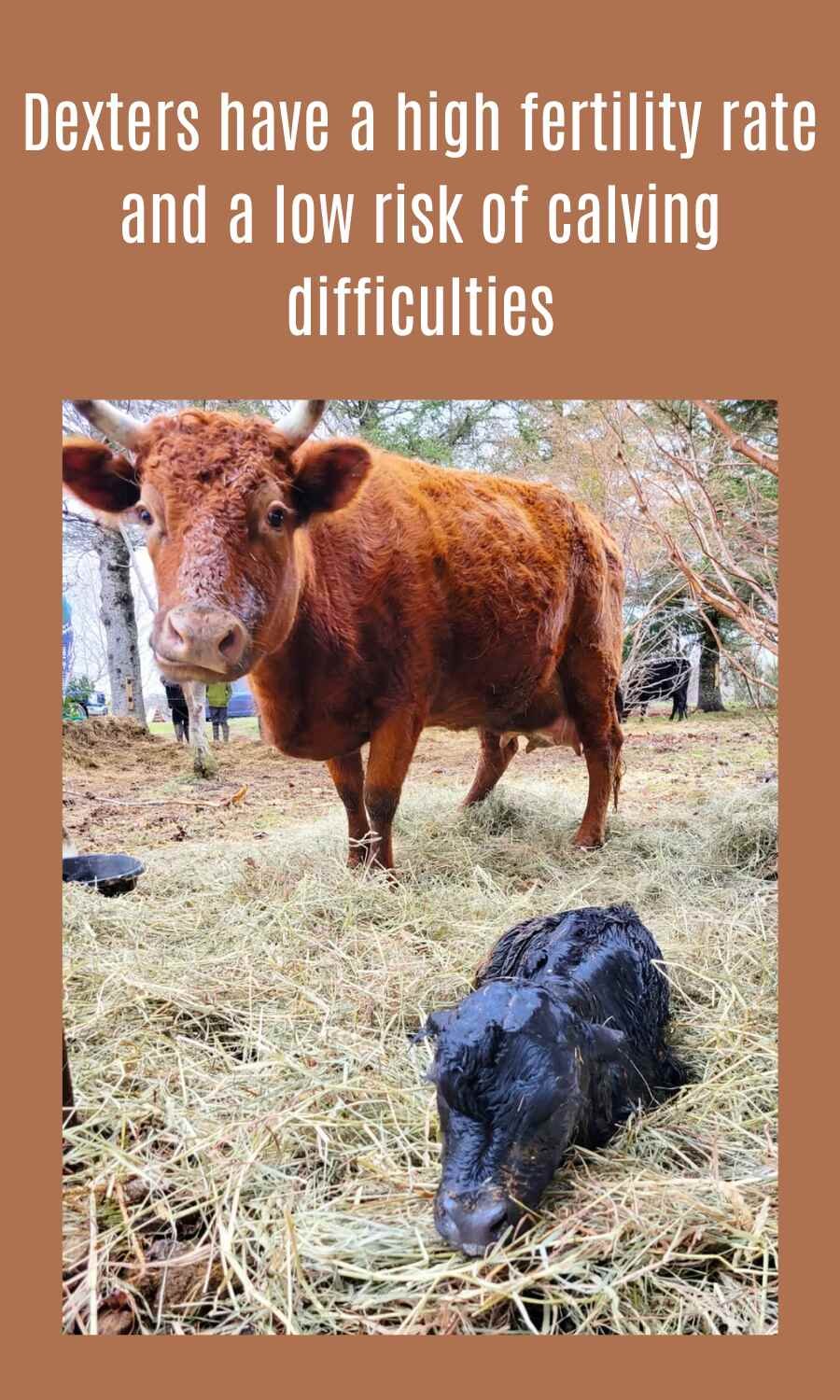
So, small cows can give several calves over their lifetime, making them one of sustainable long-term investments.
Docile Temperament
Dexters are known for their gentle and friendly nature. Due to their small size, they are easy to handle, even for beginners or families with children.
Their calm disposition makes them good pets for small-scale farms and interactive homesteads.
If you care for them with love, they will return with the same. They are also intelligent and curious.
Dexter Cattle Disadvantages
Limited Milk Yield
Dexter cows deliver 3-4 gallons of milk without calf.
But other times, they can only produce 1–2 gallons daily, significantly less in quantity than larger dairy breeds like Holsteins.
It may be sufficient for small families but not for larger households. Farmers who want to make extra income from milk sales may also find Dexters challenging.
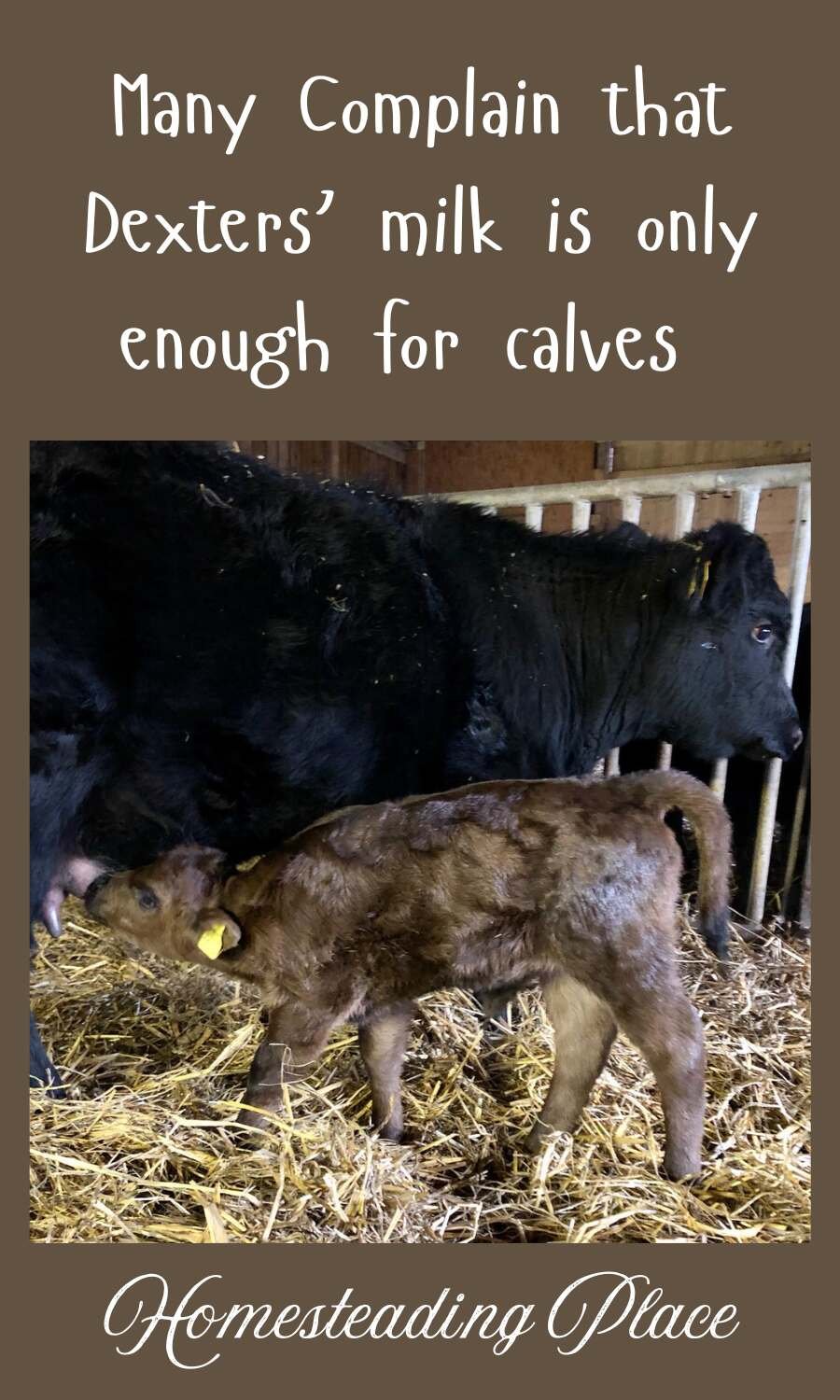
Low Meat Yield
Dexters are smaller in size, so you cannot expect a large amount of beef compared to standard beef cattle breeds.
You can calculate yourself Dexter steer producing around 400–500 pounds of beef against 700–900 pounds from a larger breed.
Small cattle yield more tender than other beef and have more Omega-3 fatty acids.
You can expect slightly darker meat and 50– 60 percent for dressing out.
While their meat is lean, good for graded choice, and has little waste, it may not be sufficient for large-scale meat needs.
Horns Can Be Dangerous
Dexters grow horns that are 4 to 8 inches in their first year.
By the second year, horns can be a lethal weapon that can pose safety threats to handlers and other animals.
Though cattle possess mid-sized, white horns with black tips, they can be enough to harm.
Dehorning is possible but can be stressful, requiring more effort and professional help. So, families with kids and beginners may feel struggling with this aspect.
Genetic Issues
Dexters’ genes mutate regularly, causing genetic problems such as predisposition, chondrodysplasia (dwarfism), and Pulmonary Hypoplasia.
So, calves can face earlier problems with their body shape and growth.
Small size may lead to calving difficulties, primarily for first-time heifers.
Breeding two carriers also raises the risk of requiring regular monitoring and, in some cases, assistance from a professional vet.
Early diagnosis helps treat health issues but can also increase initial costs.
So, homesteaders without experience in calving might have problems managing these situations.
High Initial Cost
As Dexters are a rare breed, their popularity inflates their price.
So, they can cost you anywhere between $1000 and $2500, while common cattle breeds cost only around $800–$1,500.
You can expect to pay around $1,000 for steer calves, $1,250 for bull calves, $1,650 for heifer calves, and $2,250 for cows.
Add some additional cost to the expense of breeds if they are not locally available.
Limited Availability
Dexters are native to the southwestern region of Ireland, so they are unavailable as mainstream cattle breeds.
This makes it difficult for raisers to find the breeders.
Also, farmers in remote areas can face logistical challenges when buying and selling units.
Not Static Breeding
Breeders focus on raising grass-fed beef, which poses challenges about udders, teats, and milk yields.
So, first-time dairy farmers cannot have fun with milking. The milk can be too thin, thick, short, or spongy if they hand milk.
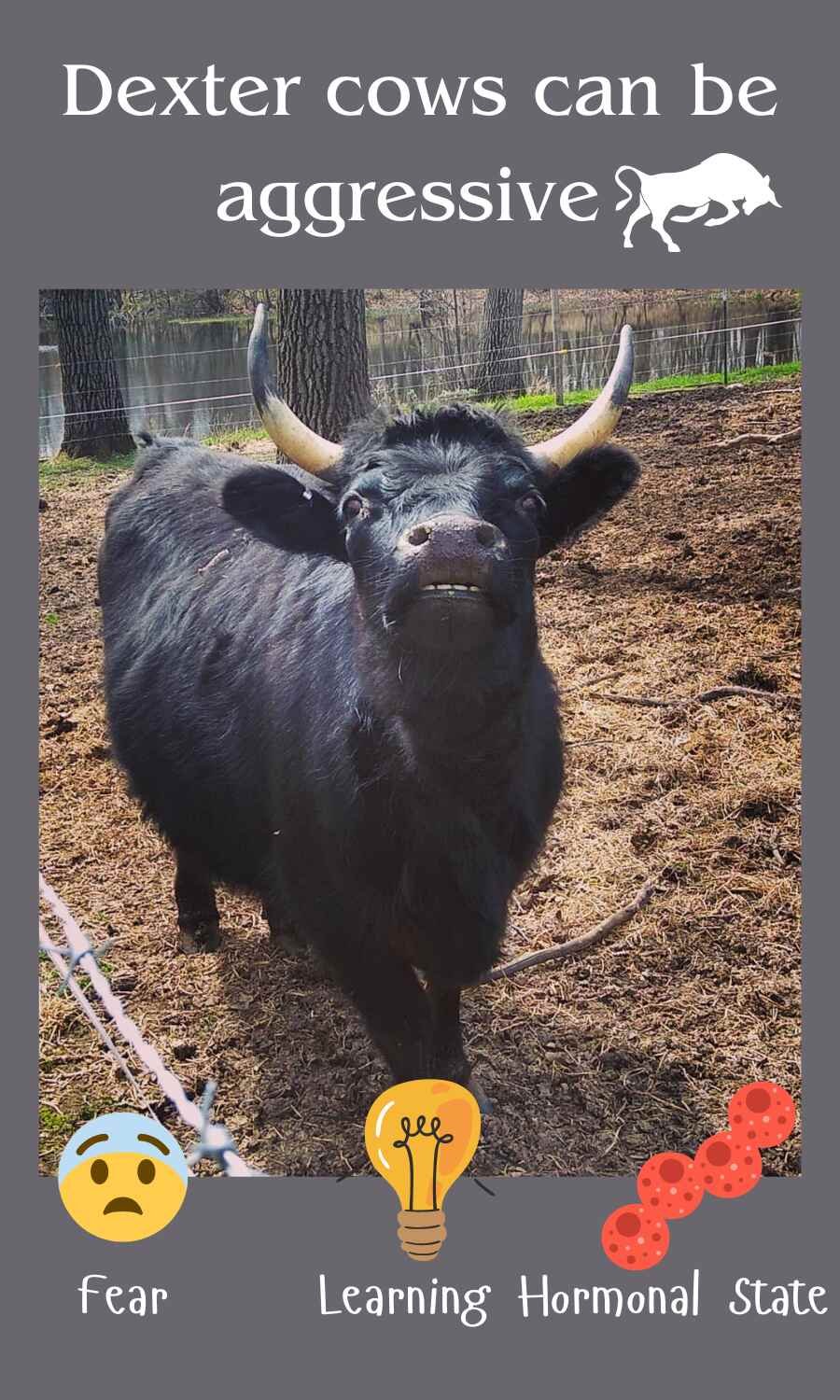
One of the serious disadvantages of dexter cattle is that you may struggle to get the milk to pail.
Unpredictable
Dexter cattle are not as gentle and easy to handle as jerseys.
They also do not make lively animals like goats. However, you cannot predict their behavior, especially during lactation.
Small cows can kick the handlers when hand-milking until they convince the animals.
Final Thoughts
Dexter cattle have advantages (small size, hardiness, tri-purpose, etc.) and disadvantages (low yield, genetic issues, high cost, etc).
When choosing Dexters, consider factors such as the homestead’s size and resources (pasture and housing space), breeding knowledge, and primary purpose for raising.
Also, check if the breed is available and the budget.



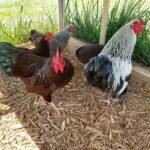
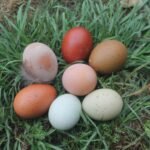

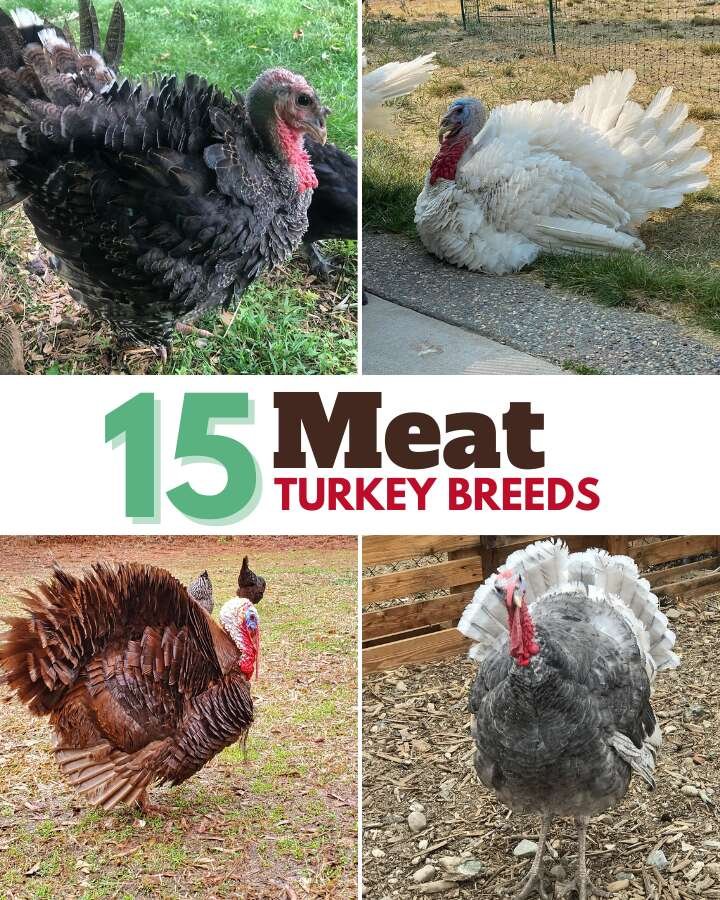
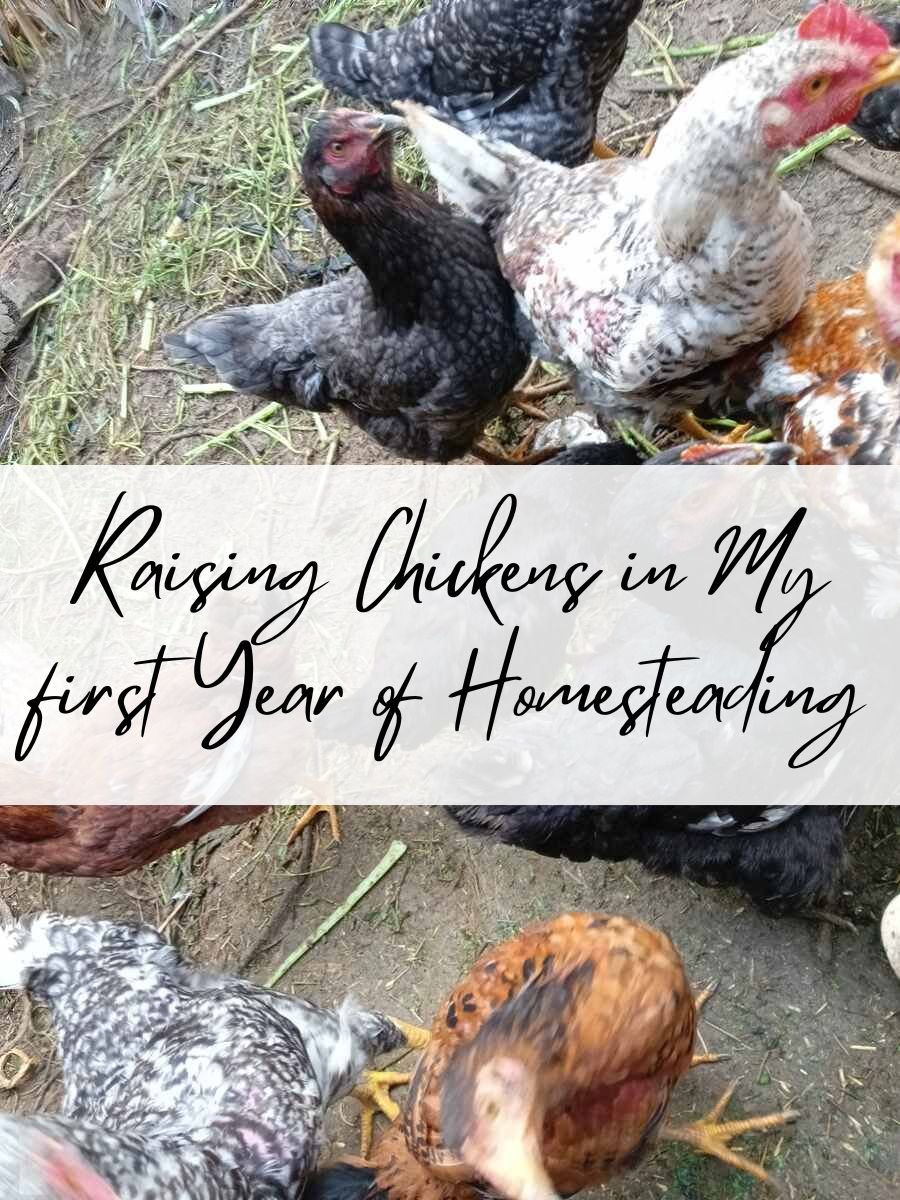

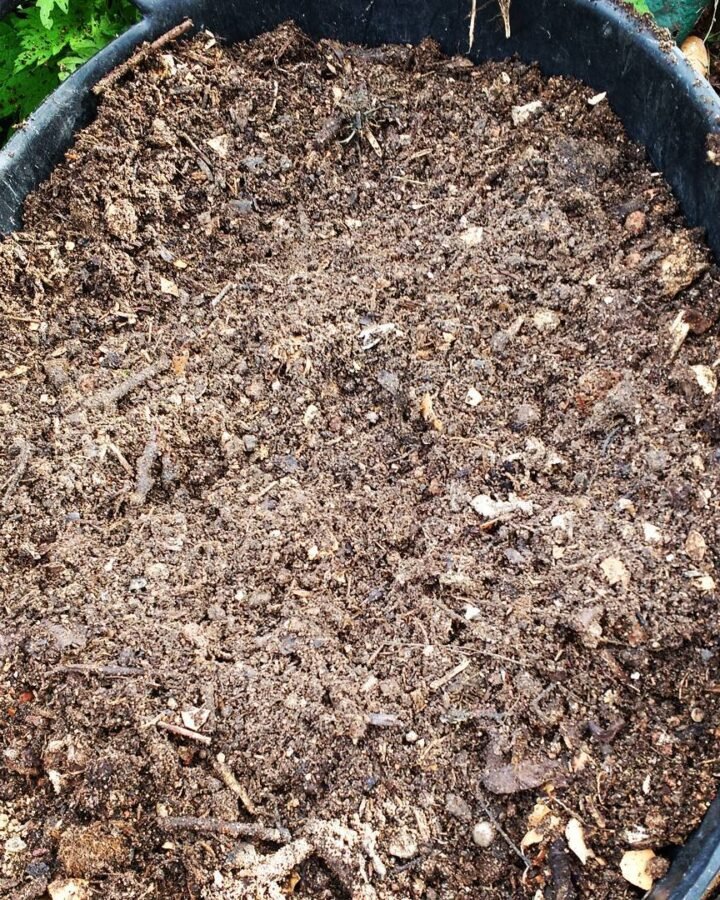
Leave a Reply